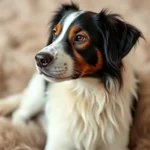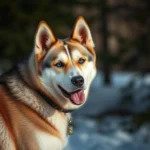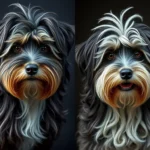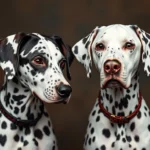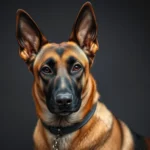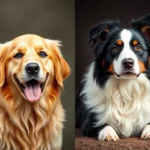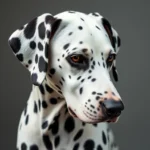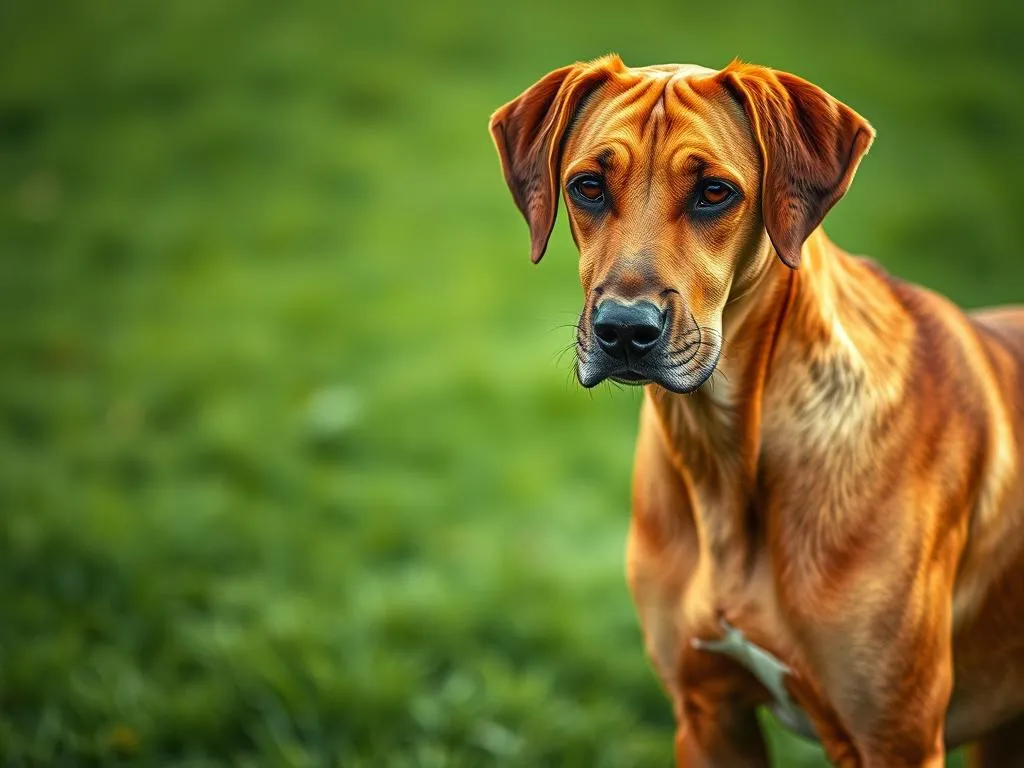
Introduction
The Rhodesian Ridgeback is a remarkable breed, known for its unique physical characteristics and rich history. Originating from Southern Africa, these dogs have earned their place as both loyal companions and skilled hunters. Understanding breed-specific traits is essential for potential owners and dog lovers alike, as it helps to ensure a harmonious relationship between humans and their canine counterparts. This article aims to provide comprehensive Rhodesian Ridgeback facts, covering everything from their history and physical features to health considerations and grooming needs.
History of the Rhodesian Ridgeback
Origins in Southern Africa
The Rhodesian Ridgeback’s roots trace back to Southern Africa, where they were bred by indigenous Khoikhoi tribes. These dogs were originally known as Khoikhoi dogs and played a crucial role in hunting large game, including lions. The native dogs were crossed with European breeds brought by settlers, enhancing their hunting abilities and creating the Rhodesian Ridgeback we know today.
Development of the Breed in the 20th Century
The breed began to gain recognition in the early 20th century, with the establishment of the Rhodesian Ridgeback Club in 1922. This club was pivotal in formalizing breed standards and promoting responsible breeding practices. Over the years, Rhodesian Ridgebacks have been acknowledged by various kennel clubs around the world, including the American Kennel Club (AKC). The influence of selective breeding has resulted in the modern Ridgeback, which is celebrated not only for its hunting prowess but also for its loyalty and companionship.
Physical Characteristics
General Appearance
The Rhodesian Ridgeback is a medium to large-sized dog, typically weighing between 70 to 85 pounds, with males generally being larger than females. Their height ranges from 24 to 27 inches at the shoulder. They have a well-proportioned body, giving them an athletic appearance.
Coat Color and Texture
The Ridgeback’s coat is short, dense, and sleek, making it easy to maintain. Common coat colors include light wheaten to red wheaten. The texture of their coat serves as a natural barrier against the elements, providing some protection in various climates.
Distinctive Features
One of the most notable features of the Rhodesian Ridgeback is the ridge of hair that runs along its back, growing in the opposite direction of the rest of the coat. This distinctive trait is a hallmark of the breed. Additionally, Ridgebacks have round, expressive eyes that range in color from amber to brown, and their ears are set high and are somewhat droopy, adding to their charm.
Temperament and Behavior
General Personality Traits
The Rhodesian Ridgeback is known for its loyalty and protective instincts. They form strong bonds with their families and are often described as affectionate and gentle, particularly with children. This breed is typically reserved with strangers but will not hesitate to protect their home and loved ones if necessary.
Energy Levels and Activity Needs
High energy levels are a defining trait of the Rhodesian Ridgeback. They require regular exercise to keep them physically and mentally stimulated. Daily walks, runs, or play sessions are essential to prevent boredom, which can lead to destructive behavior. Ridgebacks are playful and enjoy socializing with both humans and other dogs.
Compatibility with Children and Other Pets
This breed generally gets along well with children and can be very gentle with them. However, as with any dog, supervision during interactions is important. When it comes to other pets, Ridgebacks may have a strong prey drive due to their hunting background, so early socialization is crucial to ensure positive relationships with other animals.
Health Considerations
Common Health Issues
While Rhodesian Ridgebacks are generally healthy dogs, they are prone to certain health issues. Hip dysplasia, a genetic condition that affects the hip joint, is common in the breed. Additionally, they are susceptible to dermoid sinus, a condition related to the ridge on their back, which may require surgical intervention.
Lifespan and Factors Affecting Health
The typical lifespan of a Ridgeback ranges from 10 to 12 years. Factors such as genetics, diet, exercise, and regular veterinary care play significant roles in their overall health and longevity. Regular check-ups can help catch potential health issues early.
Importance of Regular Veterinary Visits and Preventive Care
Routine veterinary visits are essential for maintaining the health of a Rhodesian Ridgeback. Preventive care, including vaccinations, parasite control, and dental care, is vital to ensuring a long and healthy life for your furry friend.
Training and Socialization
Early Training Recommendations
Early training and socialization are crucial for Rhodesian Ridgebacks. Puppies should be exposed to various environments, people, and other animals to develop into well-rounded adults. This early exposure helps mitigate any potential behavioral issues down the line.
Effective Training Methods
Positive reinforcement techniques work best with the Ridgeback’s independent nature. Using treats, praise, and play as rewards can motivate them during training sessions. Consistency is key, as these dogs thrive on routine and structure.
Challenges Faced in Training
One challenge in training Rhodesian Ridgebacks is their stubbornness. They are known for their independent thinking, which can make them less eager to follow commands compared to some other breeds. Patience and persistence are essential, as building a strong bond with your Ridgeback will lead to better training outcomes.
Grooming Needs
Coat Care
The short coat of the Rhodesian Ridgeback requires minimal grooming. They tend to shed moderately, with heavier shedding occurring during seasonal changes. Regular brushing (once a week) can help reduce loose hair and keep their coat healthy.
Bathing and Brushing Routines
Bathing should be done as needed, typically every few months or when they become particularly dirty. Over-bathing can strip the natural oils from their skin. During brushing sessions, pay attention to the ears and paws, as these areas can collect dirt and debris.
Ear, Nail, and Dental Care Tips
Routine ear cleaning is important to prevent infections, especially in breeds with floppy ears like the Ridgeback. Regular nail trimming is also essential, as long nails can cause discomfort and affect their walking. Dental care, including brushing their teeth and providing dental chews, can help prevent periodontal diseases.
Living Environment
Ideal Living Conditions for a Rhodesian Ridgeback
Rhodesian Ridgebacks thrive in homes with ample space to roam and play. While they can adapt to apartment living, access to a yard or nearby park is ideal for their exercise needs. This breed does best in environments where they can be active and engaged.
Space Requirements
Having a yard is highly beneficial, as it allows them to run and play freely. For those living in apartments, daily walks and playtime at dog parks are essential to meet their exercise needs.
Climate Considerations
This breed is adaptable to various climates but does best in moderate temperatures. Their short coat provides some protection against the cold, but they should not be left outside in extreme weather conditions for prolonged periods.
Best Practices for a Harmonious Home
To ensure a harmonious home, Rhodesian Ridgebacks should have regular interaction with family members. Providing mental stimulation through toys and activities can prevent boredom, reducing the likelihood of destructive behavior.
Fun Facts About Rhodesian Ridgebacks
Unique Traits and Quirks of the Breed
- The Rhodesian Ridgeback is known as the “African Lion Hound” due to its historical role in hunting lions.
- They are excellent swimmers, a trait not commonly associated with all dog breeds.
- Ridgebacks are known for their “cat-like” tendencies, often preferring to lounge in high places.
Notable Rhodesian Ridgebacks in History and Pop Culture
Rhodesian Ridgebacks have appeared in various films and literature, showcasing their popularity and charm. Notably, they have been featured in shows like “The Queen’s Gambit” and in novels by authors such as J.R.R. Tolkien.
Trivia Related to the Breed’s Characteristics
Did you know that the ridge of hair along a Ridgeback’s back is formed by a unique genetic trait? This ridge is a defining characteristic and varies in size and shape among individual dogs.
Conclusion
In summary, the Rhodesian Ridgeback is a unique breed with a fascinating history, distinctive physical characteristics, and a temperament that makes them exceptional companions. Understanding their needs, from health considerations to training and grooming, is essential for potential owners. By providing a supportive and active environment, you can ensure a fulfilling life for your Ridgeback. As with any breed, further research is vital to appreciate the joys and responsibilities that come with ownership. The bond formed with a Rhodesian Ridgeback is truly rewarding, making them cherished members of the family.
